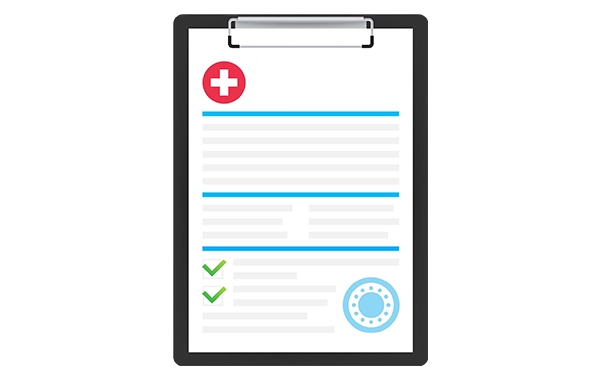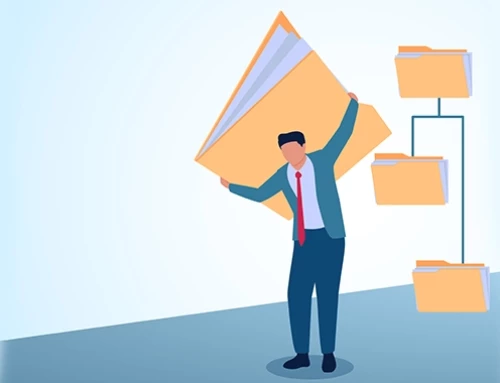Contents
Proper documentation is the backbone of effective case management. Standardized personal injury forms inform clients about medical release authorizations, streamline the process of gathering critical information, and help lawyers maintain a consistent approach. However, law firms face challenges such as errors, inefficiencies, and compliance risks without a system to manage these documents effectively. From repetitive data entry to delayed responses from clients or insurance companies, these issues can slow case progression and hinder the practice’s overall effectiveness. This article will explore why standardized forms are essential in personal injury law, the common hurdles lawyers face without the proper resources, and how leveraging modern technology can resolve these challenges and improve law firm operations.
Key Personal Injury Forms You Need
The right forms ensure consistency and compliance in case management. Here are the most critical ones:
Client intake form
A well-crafted client intake form is often the first point of contact between your firm and a prospective client. It should gather essential data such as personal information, accident details, injury severity, and insurance coverage. By capturing critical facts early on, you set the stage for accurate record-keeping and smoother case evaluation.
Medical release authorizations
Obtaining relevant medical records is vital when pursuing a personal injury claim. Standardized medical release authorization forms allow your firm to quickly request records from healthcare providers. This expedites the discovery phase and helps build a robust case.
Settlement demand letter templates
A settlement demand letter can make or break negotiations. Using a standardized template ensures that critical legal elements—liability, damages, and supporting evidence—are uniformly represented. Consistency projects professionalism and reduces the risk of overlooking key points.
Fee agreement templates
Transparency in billing and fee arrangements is essential. Tailored fee agreement templates that outline contingency fees, billing rates for additional services, and potential disbursements help prevent misunderstandings. Clear fee agreements also strengthen client trust and reduce disputes down the line.
Ensuring Compliance and Accuracy
Proper documentation is critical in personal injury cases. Legal forms must be accurate, up-to-date, and compliant with state laws to prevent disputes, case delays, or malpractice risks. Attorneys must ensure their personal injury forms meet state-specific requirements, reflect current regulations, and are properly maintained for audits.
State-specific requirements and variations.
Personal injury laws differ by state, which affects form requirements, fee agreements, disclosure statements, and settlement procedures. Attorneys must use jurisdiction-compliant forms to avoid legal challenges.
- Contingency Fee Agreements: Some states impose fee caps (e.g., California limits fees to 33.33% in some cases). Others require written disclosure of alternative fee structures.
- Medical Release Forms (HIPAA Compliance): Some states mandate additional consent forms beyond standard HIPAA releases. For example, New York requires special authorizations for mental health records.
- Demand Letter Regulations: Certain states, like Florida, require pre-suit demand notices before filing a lawsuit. Others, like Texas, have caps on non-economic damages that must be addressed in settlement negotiations.
- Arbitration and Dispute Resolution Clauses: Some states restrict mandatory arbitration clauses in personal injury fee agreements. Lawyers must ensure these provisions comply with local bar association rules.
- Electronic Signatures: While most states accept e-signatures for legal documents, some require notarization for certain releases or agreements.Regularly review state bar association websites and court administrative rules to ensure all forms comply with current jurisdictional requirements.
Keeping forms updated with changing regulations
Legal regulations change frequently due to new laws, court rulings, and administrative policies. Firms using outdated forms risk case dismissals, contract disputes, and ethical violations.
- HIPAA and Privacy Laws – New privacy regulations impact medical authorization forms and client consent requirements.
- Tort Reform Laws – Damage caps, statute of limitations changes, and settlement procedures may shift, requiring updates to demand letters and fee agreements.
- E-Discovery and Digital Filing Requirements – Courts increasingly require electronic submission of documents, impacting how forms must be formatted and stored.
- Assign a Compliance Officer or Staff Member – Designate someone to monitor state and federal legal changes.
- Quarterly Form Audits – Review all personal injury forms every three to six months to ensure they reflect current laws.
- Utilize Legal Tech Updates – Case management software (like RunSensible) often includes auto-updated form templates.
- Subscribe to State Bar Alerts – Stay informed about regulatory updates and court rule changes.
Proper record-keeping for auditing.
Accurate and organized document retention is critical for law firm audits, protecting against malpractice claims, and resolving legal disputes. Ensuring all personal injury forms are properly stored, securely archived, and easily retrievable is essential for compliance and efficiency.
Standardized File Naming System
- Consistent Format: Always use a clear naming convention for files. Example: PDF
- Avoid Vague Names: File names like doc or scan01.pdf create confusion and make files difficult to locate.
Cloud-Based Storage for Secure Access
- Encrypted Platforms: Store documents in reliable, encrypted cloud services to protect sensitive data.
- Offsite Backups: Maintain duplicates of all vital records in a secure offsite location to minimize the risk of data loss.
Document Retention Policies
- State-Specific Requirements: Retention periods can vary by jurisdiction, typically ranging from 5 to 10 years.
- HIPAA Compliance: Medical records related to personal injury cases require secure handling in compliance with HIPAA.
Version Control
- Revision History: Keep a detailed log of changes to ensure you always know which version is the most current.
- Outdated Versions: Mark superseded forms or documents as “inactive” or “archived” to prevent accidental use.
Audit Trail Logs
- Comprehensive Tracking: Use document management systems that record who accessed, modified, or shared each form.
- Compliance Verification: These logs are essential for demonstrating proper procedures and record-keeping during audits.
Where to Find Reliable Personal Injury Form Resources
When building or refining a personal injury practice, having quick access to authoritative, up-to-date legal forms is critical. Fortunately, there are several reliable sources to turn to, each offering distinct benefits.
A. Bar association websites.
Bar association websites provide some of the most authoritative, jurisdiction-complaint legal forms for attorneys, often aligning with state laws, court requirements, and ethical standards. Many include contingency fee agreement templates that comply with state-specific disclosure laws, HIPAA-compliant medical release forms, and pre-approved settlement agreements. These resources can be found on your state’s official bar website, while the American Bar Association (ABA) offers general templates that may still require state-specific adjustments. Local trial lawyer associations also supply customized personal injury forms for members, such as the California State Bar’s sample fee agreements tailored to contingency-based cases and the Florida Bar’s pre-suit demand letter templates required by law. Consider joining your state’s trial lawyer association for ongoing access to exclusive form libraries and timely updates on regulatory changes.
B. Local continuing legal education (CLE) providers.
Local Continuing Legal Education (CLE) programs are a valuable source for current, state-compliant legal forms, often featuring templates created by seasoned personal injury attorneys. These may include customizable client intake forms that safeguard attorney-client privilege, updated fee agreements aligned with the latest bar regulations, and expertly drafted demand letters for effective case negotiations. To find these resources, explore state bar CLE programs—which frequently bundle templates with mandatory educational credits—trial lawyer associations like the American Association for Justice (AAJ), and law school clinics or legal institutes offering free or low-cost materials. For example, the New York State Bar CLE provides ethically tailored fee agreements specific to New York, while the Texas Bar CLE includes demand letter samples designed for Texas courts. As a practical tip, inquire whether CLE courses supply downloadable form libraries or sample documents as part of their curriculum.
C. Legal form marketplaces and subscription services.
Legal form marketplaces and subscription services provide a wide range of customizable, professionally drafted legal templates, making them an excellent option when bar association resources or CLE programs fall short. These platforms often feature comprehensive libraries that include intake forms, HIPAA-compliant releases, settlement agreements, and fee contracts, with the added benefit of jurisdiction-specific filtering to ensure local compliance. Many services, such as RunSensible, LawDepot, and US Legal Forms, also include automated customization tools that pre-fill client information, speeding up document preparation and reducing errors. US Legal Forms, for example, allows attorneys to select state-specific personal injury forms, while RunSensible’s built-in library and e-signature integration streamline the entire process. To further increase efficiency, integrating these automated forms into your existing case management system can help you draft and finalize documents more quickly while maintaining accuracy.
Tailoring Forms to Your Firm’s Needs
Standardized personal injury forms offer efficiency and compliance, but they are not always one-size-fits-all. Law firms handling diverse case types, high caseloads, and client-specific needs benefit from customized forms that streamline operations while maintaining a professional image.
Customizing templates for specific practice areas.
Customizing templates for specific practice areas is essential for personal injury lawyers, as different types of cases require unique details in client intake forms, medical release authorizations, and settlement documents. Tailoring forms to case-specific needs ensures accuracy and efficiency from the start. Here’s how to adapt templates for various practice areas:
Motor Vehicle Accident Cases: Include sections for police report details, driver information, and insurance coverage limits.
Add checkboxes for seatbelt use, weather conditions, and road hazards to support liability assessments.
Medical Malpractice Claims: Require detailed hospital records releases and consent for expert evaluations.
Include specific authorizations for specialized medical records, such as imaging scans or surgical reports.
Workplace Injury Cases: Add sections for employer liability, workers’ compensation claim details, and OSHA reports.
Incorporate workplace safety assessments and company incident reports.
Premises Liability Cases (Slip and Fall): Require property owner/manager contact information. Include maintenance logs and surveillance footage requests to strengthen liability claims.
Use case-specific intake forms that pre-fill client details into medical releases, demand letters, and fee agreements. This eliminates redundant data entry, saves time, and ensures consistency across documents.
Incorporating firm branding and disclaimers.
Your legal documents play a critical role in establishing your firm’s professionalism and credibility. By customizing forms with consistent branding, clear language, and precise disclaimers, you can build trust with clients while ensuring a seamless user experience.
Key Customization Elements
1. Firm Branding
- Add your firm’s logo, color scheme, and professional letterhead to every document.
- Standardize font styles, layouts, and signature blocks for a consistent, polished look across all materials.
- Legal Disclaimers
- Fee Agreements: Clearly outline contingency fees, costs, and client responsibilities to promote transparency.
- Medical Authorizations: Include disclaimers that ensure HIPAA compliance and explain how patient records will be used.
- Settlement Agreements: Confirm that clients fully understand and accept settlement terms.
- Clear, Accessible Language
- Use plain language to make forms more understandable, avoiding unnecessary legal jargon.
- Consider offering translated versions of key documents to serve non-English-speaking clients more effectively.
Build a centralized template library that includes branded, compliant forms for every practice area. With a well-organized system, you can streamline document creation, improve consistency, and make your firm’s communications more efficient and professional.
Integration with digital signature tools.
Integrating digital signature tools into your legal workflow can significantly reduce delays, ensure legal compliance, and improve accessibility for clients. By adopting e-signature solutions, personal injury law firms can streamline document processing and deliver a more efficient client experience.
Why Digital Signatures Matter
- Faster Processing
Clients can sign forms—such as intake documents, fee agreements, and releases—instantly from any device, cutting down the time spent waiting on manual signatures. - Enhanced Security
Digital signature tools comply with regulations like UETA and the ESIGN Act, ensuring that all signed documents are legally valid and protected. - Automated Tracking
Most platforms provide detailed timestamps and audit trails, helping you verify document authenticity and maintain a reliable record of client approvals.
Top Digital Signature Tools for Law Firms
- RunSensible: Integrates seamlessly with client portals, offering automated form generation and secure e-signature capabilities.
- DocuSign: An industry-standard solution known for legally binding signatures.
- Adobe Sign: Provides cloud storage and robust signature tracking features.
- HelloSign (by Dropbox): A user-friendly e-signature tool suitable for legal agreements and contracts.
Types of Forms Perfect for E-Signatures
- Client Intake Forms: Enable remote sign-ups, speeding up the case onboarding process.
- Medical Release Forms: Eliminate delays in obtaining HIPAA authorizations.
- Fee Agreements: Keep a clear, timestamped record to minimize future disputes.
- Settlement Agreements: Secure immediate client approval and prevent last-minute issues.
Leverage legal practice management software—such as RunSensible—to automatically fill out forms with client data, send them for e-signatures, and securely store the signed versions. This integration saves time, ensures compliance, and provides a more seamless experience for both you and your clients.
Using Practice Management Software for Form Automation
Law firms handle a vast number of legal documents daily, from intake forms to fee agreements. Managing personal injury forms for each client is time-consuming and prone to errors. Automated templates streamline this process by pulling case-specific data directly into pre-formatted forms, eliminating repetitive data entry and ensuring accuracy.
How automated templates save time.
Automated templates allow law firms to generate, edit, and manage legal forms without repetitive data entry. Instead of manually filling out intake forms, medical release authorizations, and fee agreements for each client, attorneys can use pre-populated templates that pull information directly from case files.
Key Time-Saving Benefits of Form Automation
- Eliminates redundant data entry – Client and case details are automatically populated across multiple forms.
- Reduces document preparation time – Standardized templates ensure all required fields are pre-filled, minimizing manual edits.
- Speeds up client onboarding – Clients can complete and sign documents digitally, reducing delays.
- Ensures compliance with state regulations – Automated templates can be updated to reflect the latest legal requirements.
A paralegal traditionally spends over 30 minutes manually completing intake forms, HIPAA release forms, and fee agreements, followed by printing, in-person signing, scanning, and emailing, which adds a 48-hour delay. With automation, the system auto-fills client information into pre-approved templates, reducing documentation time to under five minutes. Clients can e-sign remotely, eliminating signing delays. By reducing repetitive administrative tasks, law firms can shift their focus to case strategy and client representation instead of paperwork.
Common pitfalls of manual form handling.
Many law firms still rely on traditional paper-based or non-automated digital forms. This creates several inefficiencies and risks that can affect case outcomes and firm operations.
Key Problems with Manual Form Handling
- Inconsistent Data Entry – Manually retyping client details increases the risk of errors, such as incorrect names, addresses, or insurance information.
- Document Misplacement – Paper forms can be lost, damaged, or misfiled, leading to delays in case progression.
- Longer Processing Times – Waiting for clients to print, sign, and return physical forms can slow down case resolutions.
- Compliance Risks – Outdated forms may not meet state-mandated disclosure requirements, fee agreement structures, or privacy laws.
RunSensible as a One-Stop Solution for Form Automation
RunSensible is a fully integrated legal practice management system that streamlines personal injury case documentation. With built-in automation tools, RunSensible eliminates manual paperwork, reduces errors, and ensures compliance.
Built-In Library of Customizable Forms
- Provides pre-designed legal templates for:
- Client intake forms
- Medical authorization releases
- Fee agreements
- Settlement demand letters
- Ensures state-compliant, up-to-date legal forms.
- Allows customization to match specific case needs.
Automatic Client Data Population to Reduce Errors
- Pulls client and case details directly from the system into all related forms.
- Reduces the need for manual data entry, minimizing the risk of typos and inconsistencies.
- Updates across all linked documents instantly when client information changes.
Secure Client Portal for Form Sharing & E-Signatures
- Clients can access, review, and sign documents online from any device.
- Ensures secure, encrypted file sharing to protect sensitive client data.
- Provides a real-time tracking system so attorneys can see when clients open, review, and complete forms.
How RunSensible Improves Law Firm Efficiency
With a constant flow of critical documents, disorganization or outdated forms can lead to costly errors in legal and personal injury practices. Adopting best practices like standardized naming conventions, secure cloud storage, and routine audits can help maintain an efficient workflow for your personal injury forms and keep the documentation current and compliant.
Naming conventions and version control
Without a structured naming convention, law firms can struggle to find the correct version of a document, leading to confusion, inefficiencies, and potential legal errors. Consistently formatted names ensure that documents are easy to search, retrieve, and track.
How to Structure File Names for Legal Forms
A standardized naming system should include:
- Document type – Clearly define what the document is, such as an intake form, fee agreement, or settlement letter.
- Client name – Include the full name to differentiate documents between cases.
- Case number – A unique identifier ensures that documents remain linked to the correct case.
- Date – Use a YYYY-MM-DD format to keep files organized chronologically.
- Version number – If multiple drafts exist, clearly indicate the version (e.g., v1, v2).
| Process | Without Automation | With RunSensible |
| Client Intake | 30+ minutes manually filling out forms | 5 minutes with auto-filled templates |
| Document Signing | 2-3 days waiting for signed forms | Instant via e-signatures |
| Data Accuracy | High risk of typos and missing information | Auto-populated data ensures consistency |
| Compliance Updates | Requires manual updates and reviews | Built-in updates for legal compliance |
For example, a well-structured personal injury fee agreement might be named:
Fee_Agreement_JohnDoe_Case4567_2024-03-12_v2.pdf
To prevent accidental use of outdated versions, label them as “inactive” and always store the latest version separately in a designated “Active Forms” folder. Utilize document tracking software to maintain a history of changes, and implement a structured file-naming system to ensure that all team members can quickly locate, update, and share legal documents without errors or confusion.
Cloud-based storage and access
Many law firms still store documents on local servers or physical files, making it difficult to access critical legal forms remotely. Cloud-based storage provides secure, organized, and easily accessible document management that improves firm-wide efficiency.
Why Cloud Storage is Essential for Law Firms
- Remote Access – Attorneys and paralegals can retrieve and edit forms from any location, eliminating reliance on office-based filing systems.
- Security & Compliance – Cloud providers offer encryption, access controls, and automatic backups to protect sensitive client information.
- Collaboration & Workflow Efficiency – Team members can work on the same document simultaneously, reducing the need for multiple versions.
- Automated Backup & Recovery – Cloud systems ensure that no document is permanently lost due to technical failures.
How to Organize Cloud-Based Legal Forms
- Create folders by document type – Separate intake forms, fee agreements, medical authorizations, and settlement letters for easy access.
- Use access controls – Limit document access based on roles to ensure client confidentiality.
- Enable search functionality – Platforms like Google Drive, Dropbox, and RunSensible allow keyword searches for quick retrieval.
Routine audits to retire outdated forms
Outdated forms can cause compliance issues, errors in legal agreements, and inefficiencies. A firm that uses an old fee agreement template or settlement letter with incorrect legal language could face unnecessary legal disputes. Conducting regular audits helps law firms identify and replace outdated, redundant, or non-compliant forms.
Case Studies: Successful Implementation
Streamlining the process of managing personal injury forms through automation and best practices can lead to significant improvements in law firm operations. By reducing errors, and accelerating case progress, firms can achieve better client satisfaction and increase profitability. Below are real-world case studies demonstrating how streamlined form management has led to improved turnaround times, client satisfaction, and overall firm profitability.
How Streamlined Forms Improved Turnaround Times
Case Study: A Mid-Sized Personal Injury Firm
Firm Background:
A personal injury firm with 25 employees, including 10 attorneys and 15 paralegals, handled a wide range of personal injury cases, from car accidents to medical malpractice. The firm was using traditional methods of managing forms, relying on physical paperwork and manual data entry.
Problem:
The firm faced significant delays in case processing due to inefficient manual document handling. Legal assistants spent a large amount of time filling out repetitive forms, scanning signed documents, and chasing clients for missing signatures. On average, the firm spent 2-3 weeks per case just managing forms and client documents.
Solution:
The firm switched to automated form templates integrated with its case management software. Using software like RunSensible, they automated:
- Client intake forms
- Medical release authorizations
- Settlement demand letters
- Fee agreements
These templates automatically pulled client data into forms, reducing the need for paralegals to manually enter the same information across multiple documents. Additionally, clients were able to sign documents digitally via the secure client portal, reducing the back-and-forth process of mailing forms for signatures. Results:
- Turnaround time was reduced by 50% – The time spent on document management was cut in half.
- The firm moved from spending 2-3 weeks on paperwork to processing cases in 1-1.5 weeks, speeding up case resolution and improving client satisfaction.
- The attorneys spent more time on strategic casework rather than administrative tasks, allowing them to handle a higher volume of cases.
Impact on client satisfaction and firm profitability
Case Study: A Regional Personal Injury Practice
Firm Background:
This firm had been struggling with maintaining client satisfaction due to slow response times and inconsistent document handling. Clients frequently complained about the slow progress of their cases, often due to delays in completing necessary paperwork or waiting for forms to be signed.
Problem:
Clients were frustrated with having to manually complete forms, and many complained about missing or incorrect information on their intake forms. In some cases, the firm’s slow turnaround on forms led to delayed claim submissions, which resulted in clients losing confidence in the firm’s ability to manage their case effectively.
Solution:
The firm implemented digital form automation, integrating RunSensible with its existing case management system. This allowed clients to:
- Complete intake forms online at their convenience.
- Sign documents digitally, eliminating delays due to in-person signings.
- Access forms, view the status of their case, and upload documents securely through the client portal.
Results:
- 85% improvement in client satisfaction – Clients appreciated the convenience of completing paperwork digitally and the faster case resolution.
- Reduced instances of missing information due to pre-filled data from client profiles, leading to fewer corrections.
- Faster response times meant clients felt their cases were progressing more smoothly, leading to positive feedback and referrals.
- Higher retention rate – Satisfied clients were more likely to return for future legal matters or refer friends and family to the firm.
Case Study: Large Personal Injury Firm with Multiple Locations
Firm Background:
This large firm, operating across multiple locations, handled thousands of personal injury cases annually. While the firm had experienced significant success, administrative inefficiencies were cutting into profitability, and overhead costs for managing forms were increasing. The firm had several manual processes for form handling, leading to errors, redundancies, and wasted time.
Problem:
Despite a high volume of clients, the firm struggled with:
- High administrative costs associated with data entry, form distribution, and client follow-ups.
- Significant backlogs in case processing, with the firm’s legal staff spending too much time managing documentation instead of focusing on case strategy.
- Increased operational costs due to reliance on paper-based storage and physical document handling.
Solution:
The firm adopted automated templates and cloud-based document management with RunSensible. By automating:
- Form population (auto-filling client data across documents).
- Secure online signatures and digital form submission.
- Cloud storage for easy access and sharing of documents.
The firm also integrated client portals that allowed clients to upload and sign documents remotely, cutting out the need for physical paperwork. Results:
-
- Reduced administrative costs by 40% – Automation eliminated the need for extra staff to handle routine paperwork, and client-facing processes became faster and more efficient.
- Improved profitability – The firm saved thousands of dollars annually on paper, printing, and postage, and increased case volume due to the reduced time spent per case.
- Faster case resolution – On average, the firm closed cases 20% faster compared to before the automation implementation, increasing the number of cases they could manage annually.
- Higher revenue per attorney – With more time for strategic legal work and less time spent on administrative tasks, attorneys were able to handle more clients and increase billable hours.
The case studies above highlight how automating form management can drastically improve a firm’s turnaround times, client satisfaction, and profitability by shifting from manual paperwork to automated templates.Speeding up document processing allows attorneys to focus on high-value tasks, enhances client satisfaction through faster response times and a more seamless experience, and increases profitability by reducing overhead costs while managing a higher volume of cases. Firms that embrace practice management software like RunSensible see immediate operational improvements, making them more competitive, efficient, and client-friendly.
Don’t let outdated forms and manual processes hold you back. Leverage technology like RunSensible to automate personal injury forms, reduce administrative work, and enhance client satisfaction. Start automating today and experience faster case resolutions, fewer errors, and improved profitability. Schedule a demo and see how RunSensible can transform your personal injury practice.Final ThoughtsWell-managed personal injury forms are a strategic advantage for law firms. By standardizing forms and utilizing automation, firms can eliminate administrative bottlenecks, improve client satisfaction, and reduce the risk of errors. Embracing technology like RunSensible offers a practical solution to automate routine tasks, from client intake to settlement agreements, streamlining the workflow. Automation saves valuable time and ensures that legal teams can focus on higher-value activities, such as case strategy and client relations. Adopting a technology-driven approach to form management in an increasingly competitive legal landscape can position your firm for sustained success and growth.
FAQs:
1. What types of personal injury forms are most commonly used?
Some of the most commonly used forms include:
- Client intake forms (to collect basic information about the client and accident details)
- Medical release authorizations (to obtain medical records)
- Fee agreement templates (outlining the attorney’s fees)
- Settlement demand letters (used in settlement negotiations)
2. How can I store and organize personal injury forms securely?
It’s important to use cloud-based storage or document management software like RunSensible to securely store personal injury forms. RunSensible offers encryption, access controls, and automatic backups, ensuring that sensitive client data is protected. With cloud-based storage, all documents are easily accessible by authorized personnel from anywhere, reducing the risk of lost or misplaced files.
3. What are the risks of using outdated personal injury forms in case management?
Outdated forms may not reflect the latest legal changes, leading to compliance violations, errors in case evaluation, and delays in processing. Using old forms can also result in miscommunication with clients, insurers, or medical providers, ultimately jeopardizing case outcomes.
4. Can personal injury forms be customized for different cases?
Yes, many forms are customizable to fit the specifics of a case. For example, the client intake form might vary depending on whether the case involves a car accident, workplace injury, or medical malpractice.
5. How can law firms use personal injury form data to improve case outcomes?
Well-organized and up-to-date forms allow law firms to make informed decisions by quickly accessing all relevant case data. Automated form management systems like RunSensible can track key metrics such as case status, medical expenses, and insurance settlements, helping attorneys develop stronger cases and negotiate better outcomes.
6. How can law firms use personal injury form data to improve case outcomes?
Well-organized and up-to-date forms allow law firms to make informed decisions by quickly accessing all relevant case data. Automated form management systems can track key metrics such as case status, medical expenses, and insurance settlements, helping attorneys develop stronger cases and negotiate better outcomes.
Disclaimer: The content provided on this blog is for informational purposes only and does not constitute legal, financial, or professional advice.








